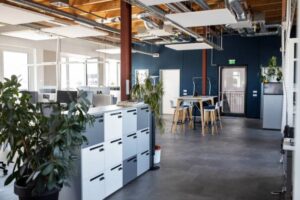Communication needs should be properly addressed during a commercial fitout project to prevent clients from being inconvenienced by interruptions to email, text messaging and phone services.
Category A fit-out is composed of the shell and core, while Category B design takes into account business needs and image. Office fitout experts excel in combining functional designs with inspiring elements to promote collaboration.
Cost-effectiveness
Collaborative commercial fit out Melbourne can save building owners money by preventing costly reworks and shortening project times, while simultaneously improving productivity by engaging employees more fully in their jobs, which in turn increases efficiency and profitability. Furthermore, collaborative processes facilitate communication among design professionals and construction partners, thus helping prevent miscommunication or delays from occurring.
 Flexible commercial fitouts can also help building owners secure the future of their spaces, providing the ability to adapt as business trends shift and evolve. A cost-effective way of remaining relevant and competitive on the real estate market, they also increase tenant satisfaction by showing an indication of commitment towards meeting tenants’ evolving needs.
Flexible commercial fitouts can also help building owners secure the future of their spaces, providing the ability to adapt as business trends shift and evolve. A cost-effective way of remaining relevant and competitive on the real estate market, they also increase tenant satisfaction by showing an indication of commitment towards meeting tenants’ evolving needs.
Collaborative fitouts not only improve productivity and employee wellbeing, but they can also add greater resale value to your building. Their modular components and moveable walls enable easy adaptation to fluctuating business demands as well as repurposing post renovation. Furthermore, utilising collaborative processes reduces litigation risks, costs associated with rework projects and overall project costs.
Collaborative contracting works best when contractors are willing to share clear visibility into project value drivers, including subcontractors’ costs. While this may require some adjustment from contractors, our experience shows that owners who push collaborative contracting find contractors willing to engage.
Sustainability
Sustainability in fitout starts by considering all aspects of its life cycle – this will enable you to limit waste and lower environmental impact. Furthermore, employees’ comfort must also be considered; lighting quality, air quality and design all influence productivity; while creating a sustainable office will promote wellbeing and encourage collaboration.
Sustainable initiatives increasingly enlist noncorporate stakeholders such as local communities and NGOs as collaborators in order to forge trust and build social capital before actual services are delivered (e.g. Energy Book and Fifty/Fifty cases). Not only can such collaborations foster civic engagement and increase sense of community involvement; they may also help businesses meet their sustainability goals more efficiently.
Successful collaborative commercial fit out Melbourne sustainability initiatives often translate a shared vision into an action plan and prioritise quick wins. Businesses thrive on tangible results, so when real and immediate gains become visible, they can generate momentum and commitment among participating organisations. Furthermore, financial benefits like cost savings or incremental revenues can act as powerful motivators for sustainability-related innovations.
The Higg Index, for instance, is helping companies quickly adopt eco-friendly practices in supply chains and operations. The index enables apparel brands to reduce fabric waste while improving energy efficiency of manufacturing processes; retailers use it to identify suppliers while making investment decisions based on it; it even promotes more sustainable thinking among corporate leadership while helping track performance against targets set by their companies.
Flexibility
Collaboration is essential to designing a commercial fitout that fulfils employees’ needs while cultivating a positive work culture. Engaging all those involved — employees, management and designers alike — in the design process ensures a final design which is functional, user-friendly and conducive to teamwork and communication. Collaborative environments also encourage teams to become more productive and innovative which is invaluable in today’s business landscape; additionally, their flexibility enables you to scale operations without incurring inflexible lease commitments like traditional office buildings offer.
Professional fitout services will create a variety of collaborative spaces designed to accommodate the varying needs of your workforce, such as smaller meeting tables and private offices or a combination of both. For example, the Department for Work & Pensions created such spaces at their new Job Centre in Yate – this included small meeting rooms, open plan workspaces and large boardrooms – among many others.
BIM can help your design process reach more flexible outcomes. By giving all stakeholders access and working on the model, issues are easily resolved before reaching the site – providing greater transparency and accountability while helping your projects to stay on schedule and within budget.
Collaboration
Collaboration is essential to any collaborative commercial fit out Melbourne project, and having the right team onboard can ensure that its final design satisfies user needs while supporting a positive work culture. Involvement from all parties involved – employees and management alike – in the design process can prevent clashes and disagreements which would otherwise delay construction timelines; additionally, it enables more user-friendly designs which allow employees to work alongside one another in an environment which promotes communication and collaboration between employees.